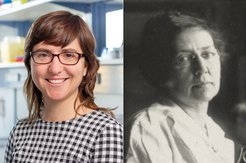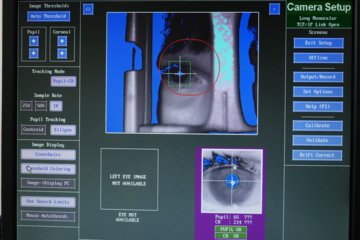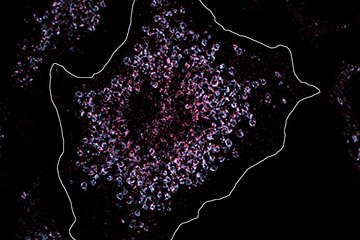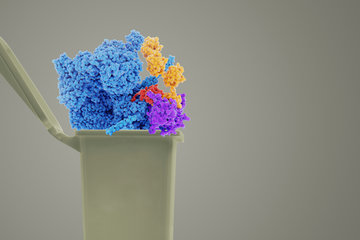![Image by Gesine Born: AI generated image of Anna Wessels Williams, with the prompt of [Image: WesselsWilliams] as a painting from Helen Frankenthaler, rough brush strokes --v 6.0
AI generated image of Anna Wessels Williams, created by Gesine Born, with the following prompts: [Image: WesselsWilliams] as a painting from Helen Frankenthaler, rough brush strokes --v 6.0](/21671504/header_image-1709889360.jpg?t=eyJ3aWR0aCI6ODQ4LCJmaWxlX2V4dGVuc2lvbiI6ImpwZyIsIm9ial9pZCI6MjE2NzE1MDR9--329d1e3be74b902468b3bfe635588fc4a978984b)
“Gender equality in science will lead to a stronger scientific community”
Mercedes Gomez de Agüero, junior group leader at the Max Planck Research Group for Systems Immunology, about pioneering bacteriologist Anna Wessels Williams
Anna Wessels Williams was a pioneering immunologist, bacteriologist, and public health advocate who paved the way for infectious disease research in the early 1900s. Her research on bacterial toxins and diphtheria antitoxin was groundbreaking and laid the foundation for modern immunology.

Anna Wessels Williams was born in Hackensack, New Jersey in 1863. Initially, she pursued a career as a school teacher, but later decided to retrain a physician after her sister almost died in childbirth in 1887, and her baby was stillborn. Struck by what she perceived as the poor medical treatment her sister received, Williams enrolled at the Woman's Medical College of the New York Infirmary where she received her M.D. in 1891. While working as a volunteer at the diagnostic laboratory of the New York City Department of Health, Williams closely collaborated with the lab's director, William Hallock Park, on a project to create an antitoxin for diphtheria. Diphtheria was a major cause of death among children at that time, particularly those from poor families, and was on the rise during the mid-1890s. In 1894, while Park was away on vacation, Williams successfully isolated a strain of the diphtheria bacillus with unusually high and consistent toxigenicity. Her isolation of the strain, subsequently named ‘Park-Williams #8’, was instrumental in the development of an effective high-yield antitoxin for the disease and used to develop the first diphtheria antitoxin and later a diphtheria vaccine.
Williams went on to conduct significant research into other vaccines, treatments, and diagnostic tests for various illnesses, such as scarlet fever and rabies. In 1905, she developed a rapid diagnostic for rabies, which yielded results in minutes and became the standard diagnostic test of rabies for the next three decades.
Mercedes, what is it about Anna Wessels Williams that particularly resonates with you?
She used basic research to find solutions for major infectious outbreak and discovered key elements that were translated into invaluable tools for the three levels of action in infectious diseases: vaccination, early-diagnosis, and treatment. Her pioneering efforts involved conducting research in a collaborative way and appropriately recognizing each participant‘s contribution.
How did she succeed in forging her own path, despite the restrictions placed upon women in science and in society in general in that era?
Anna Wessels Williams had a strong-willed and risk-taking spirit. This is reflected not only in her ground-breaking scientific work, but also in her hobbies, which were rather unusual for a woman of her time. She loved driving, in particular speeding, and going up in pre-First World War airplanes, especially with stunt pilots.
Thanks to her discoveries, the eradication of diphtheria was possible
.
What were the repercussions of her research at the time? How relevant is Anna Wessels Williams’s work today?
The COVID-19 pandemic taught us that to stop major outbreaks, everyone needs access to treatment, prevention, and quick testing. Anna Wessels Williams recognized this fact and developed cost-effective strategies for producing high-yield vaccines and antitoxins. She first applied this approach to the production of the diphtheria antitoxin and later to the development of the rabies vaccine. Additionally, Anna focused on improving diagnosis by creating rapid testing methods for rabies. Thanks to her discoveries, the eradication of diphtheria was possible.
What made you become a scientist?
I have always had the impression that tiny, often ignored details can explain certain events better than the commonly accepted paradigms based on obvious elements. I enjoy dissecting objects, figures, or situations to identify the bones and tissues and figure out how they fit together to make it work.
What piqued your interest in host microbial interaction?
I have been amazed at the tremendous impact that microscopic organisms had on humans, and I have always felt that the key lies in the early events of the encounter.
STEM professions are still dominated by men. In your opinion, what needs to happen so that more girls are inspired by STEM subjects, and so that more women go on to careers in STEM fields?
I think one way to encourage more girls to pursue careers in STEM fields is by showcasing successful women in these fields as role models. This means giving girls opportunities to see themselves reflected in these roles – for example through featuring female scientists and engineers in the media. I think this would help girls develop an interest in STEM and show them that they can succeed in these fields.
What role models do you see for women in science?
In addition to the famous female scientists who have done inspiring work, there are many other women who serve as role models in science. Female entrepreneurs in science have founded successful companies and start-ups in fields such as biotechnology, medical devices, and artificial intelligence. One example is Özlem Türeci, who co-founded BioNTech and is well-known in the biotech industry.
Create a style that works for you and love your career in science!
What advice would you give to young women considering a career in science?
There is more than one way to achieve a healthy balance between your personal and professional life. Create a style that works for you and love your career in science. Don’t forget to value yourself, find your voice, and make yourself shine!
How would you evaluate the career opportunities for women scientists who aspire to pursue a research career?
The situation is improving. Childcare services are expanding eligibility for grant applications, and some programs are exclusively for women. Salaries are tabled based on experience and diplomas. Classical parenting strategies are evolving, and mutual career support between partners is replacing outdated gender stereotypes. It is essential for every scientist, regardless of gender, to possess a strong long-term commitment to exert a high level of effort.
What would you like to see change in the coming years to achieve a greater gender equality in science?
The scientific community for sure benefits from the diversity of perspectives and experiences that women bring. So, achieving greater gender equality in science will lead to a stronger, more innovative, and more inclusive scientific community. In this way research and technology are developed with the needs and perspectives of all people in mind.
Society is constantly evolving, and so is the scientific community. I have the feeling that the younger generation of scientists has already changed a lot regarding equality.
Mercedes Gomez de Agüero, thank you so much for this interview!












